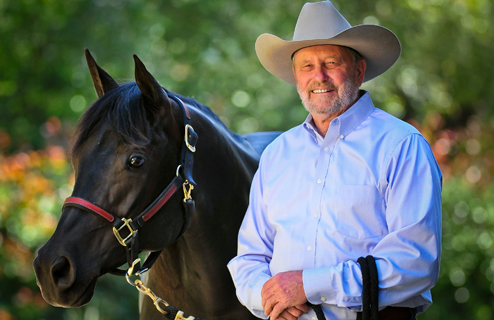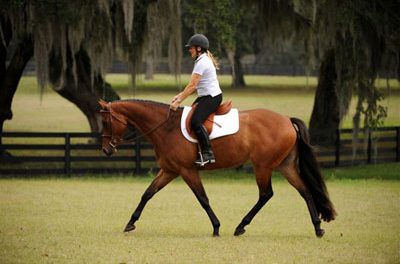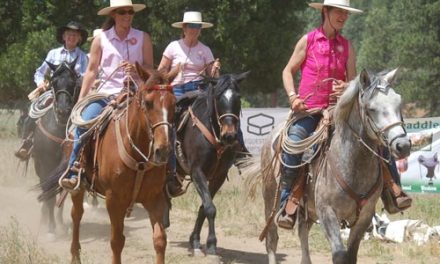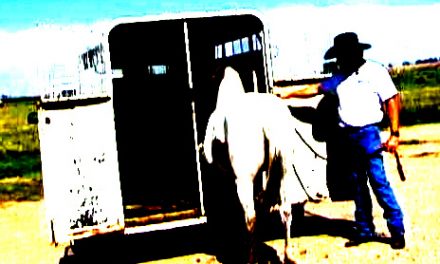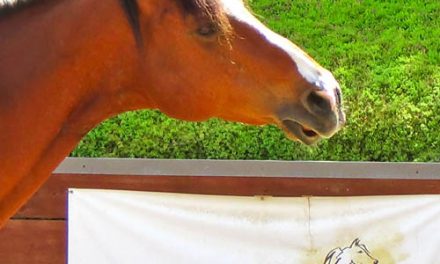 Someone recently said to me that she had watched me, Richard Winters and some of the other well known horsemen train and had seen the results and the progress a horse could make in one session. She said that when she went home and tried to do the same things, she had difficulties and did not get the same results. She wanted to know what she was doing wrong. I suspect she is not the only one who may have experienced this but I don’t believe it is a matter of doing anything wrong unless there is a lack of understanding in how to do a specific exercise. There is however, a learning curve when working with horses.
Someone recently said to me that she had watched me, Richard Winters and some of the other well known horsemen train and had seen the results and the progress a horse could make in one session. She said that when she went home and tried to do the same things, she had difficulties and did not get the same results. She wanted to know what she was doing wrong. I suspect she is not the only one who may have experienced this but I don’t believe it is a matter of doing anything wrong unless there is a lack of understanding in how to do a specific exercise. There is however, a learning curve when working with horses.
It is not the exercise that trains the horse but the trainer/owner. The exercises are important and give the training a lot of merit, both gymnastically and mentally. If the exercise is done wrong, we don’t get the result we are looking for and can actually do damage. For example, when you lunge a horse and that horse is being poky and has its nose to the outside, you are exercising the horse but not doing it correctly. The horse needs to be moving forward with impulsion at a good rate and not just poking along. When the horse is looking to the outside, the shoulder will automatically fall to the inside. This puts more weight on the forehand. Gymnastically, the development of muscle strength will therefore be in the front end and the shoulder. We want the horse to drive from behind and have self-carriage. This will build muscles in the rear and give the horse a good top line. Lunging is a good exercise but if not done properly it does not accomplish our purpose.
Another example is executing a turn around or spin. To develop a turn around, you need the horse to be in forward motion, making sure the horse is not leaning on you or leaning on your hands. If the horse is leaning on you, resisting you and fighting your hands, you are not going to get the result you want from the exercise. If you are asking the horse to make the circle smaller and smaller and the horse is pulling on your hands, you will lose impulsion or forwardness. When you do get the horse to step over, he will likely start to back up and cross underneath.
Again, it is not the exercise but our communication with the horse. We have to develop a trainer’s mind, an awareness of what the horse is doing, plus an expectation and standard for the performance. At the Illinois Horse Fair last spring, I did one clinic on setting standards. I demonstrated the difference between getting a horse to do an exercise and getting that same horse to do it well. Every horse should be trained as a performance horse because when a horse is in training with a performance trainer, there are certain standards and qualities expected by the trainer. It does not matter if the horse is used for reining or dressage, there are specific expectations. Those expectations come from the skills and expertise of the trainer. If the handler or trainer does not have expertise, the results will not be satisfactory.
Patience is also an important part of being a good trainer. You must be persistent and follow through with every command. That may mean that sometimes you have to be a little more firm. We hear all the time that we should have light hands and if the horse is light, you can have light hands. However, the horse must respect your hands. The only way a horse gets finished and light, is to learn to respect the rider’s hands. When a horse pulls on me, I block and even bump with the outside rein if needed. That tells the horse to get off my hands. The moment the horse yields, in other words shows some respect, I release.
Once you ask your horse to turn around and he respects your hands and does not lean or push on you with his mouth, then you can ask the horse to move off your outside leg. If the horse won’t move off the outside leg, the circle can’t get smaller. It is my expectation that the horse will learn to give to my outside leg. That is my standard. I find that most people, either in training a horse or just in riding, are too timid or have a lack of understanding just how much pressure is needed to get the correct response. That is what I see in probably 80 percent of the novice riders I work with. It is not a bad thing but it is coming to terms with the fact that we must put the trainer’s hat on and increase the pressure to get the proper result. We have to communicate with the horse in a very clear manner. If we are not clear, the horse will become confused.
I was recently helping a person to sack out her horse. The minute she produced the plastic bag, the horse started backing up and then the owner would stop. She was actually teaching the horse to move away from the plastic bag. This also taught the horse to move away from pressure. She was using a line about ten feet long which gave her no feel on the rope and no control. When the horse moved away quickly, she could not control the horse in the way necessary to communicate with the horse or to keep herself safe. I showed her first to shorten the lead rope and then to stay with the horse when it backed up. We went about 140 feet, about half the length of my arena before the horse stopped. The next time it was about 90 feet and the next, about 60 feet. My expectation and my standard is that the horse will stand and tolerate the bag. It is fine if the horse wants at first to back up, I’m not pushing it, the backing is the horse’s idea but I continue to keep contact on the lead rope.
This is the difference between a novice and a horseman/woman. We understand that there are certain things that will happen when we are working with a horse. Horses have a flight instinct and it is natural for them to back away from something they perceive as scary. We need to understand this and be firm when we need to be and soft at other times. We have to be persistent, patient and we must follow through. Follow through means that sometimes we need to up the ante more than we are used to or are even comfortable with. This is often a stretch for us as horsemen and women. It is important to communicate clearly and be aware of when the horse has complied and then release the pressure immediately. Use of these techniques is the difference between most horse owners and professional trainers and why those trainers obtain results with the horses they work with.

